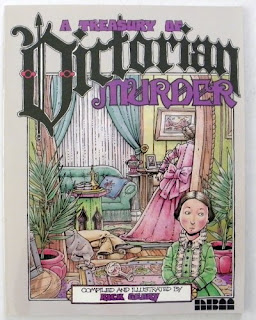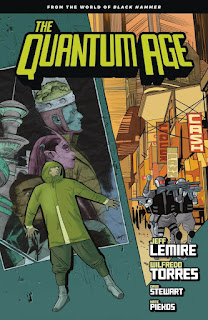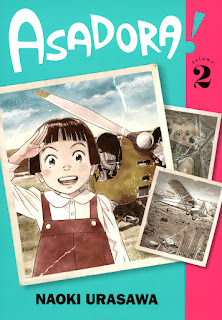Every Monday, I talk about a list of books here. If I've gotten anything new, that's the list. If I haven't...that's when "Reading into the Past" comes into play.
This series of posts looks at what I was reading "this week" in a randomly-chosen past year, from the period when I did keep a reading notebook (so I know what I read) but didn't have this blog yet (so there isn't already a post about that book). It is a weird and quixotic thing, but it is mine own.
This time out: the end of January of 2005.
Andre Norton, The Beast Master (photocopies, in Beast Master's Planet omnibus, 1/23)
This I read for work, obviously - I was Senior Editor of the SFBC at the time, and this omnibus was being published by Tor later that year. Beast Master was the first novel about Hosteen Storm, some guy in the future who could talk to animals (I think he had a Native American background to explain that - well, in those days it was probably an "Indian background," but you know what I mean). The other novel in this omnibus is Lord of Thunder; I don't seem to have read that, but the SFBC did offer the omnibus. And Lynn McConchie then wrote a series of sequels, supposedly "in collaboration" with Norton, but I always doubted how much the senior author did in the junior-senior pairings like that.
I never imprinted on Norton as strongly as some people of my generation did. I read some of her books when I was younger and enjoyed them, but never really went out of my way to read more - and Norton always had lots more; she was prolific and generally dependable. My memory is that this series is on her sillier side: psionics stories have not aged terribly well to begin with, and psionics stories about a noble savage and his animal friends have it even worse.
Robert E. Howard, Bran Mak Morn: The Last King ("read parts and skimmed parts," bound galleys, 1/23)
Here we see the era when I was "handling" a lot of books for work, and being clear about how much of them I actually read. (Elsewhere in this notebook I see "got through most of it" and "poked through parts," but the most common thing is "read beginning & end." You can get most of the point of genre fiction, especially a series novel, by reading the first 50 and last 50 pages, if you have to.)
This one was part of a somewhat scholarly project reprinting a lot of Howard work by Del Rey in the early years of the century - I think there were four Conan books first, with all of the stuff by other people stripped out of the mid-70s twelve-volume series and a serious attempt made to get back to preferred texts and proper chronological order. Bran was part of the second wave, along with Solomon Kane and Kull; I don't think we did all of them in the club, but I'm pretty sure we did this one.
I'm not a huge Howard fan; I've mostly stuck with Conan, which is his best stuff, as far as I could tell. My memory is that most of this collection - the cover calls it a novel, but it's not, at all - is OK pulp adventure, with a couple of stories substantially better than that.
Steve Almond, Candyfreak (1/24)
Popular nonfiction is always the same kind of thing: shortish books, in a breezy style, about something interesting to at least a big swath of people. It helps, the past three decades or so, if the writer can pretend that thing changed the entire world - that's not required, but it's been a major strand in the nonfiction world. This one was a bestseller, so you may have heard about it - I bet it's still selling decently even now, since the world Almond depicts is basically the same: there are a few big food/candy conglomerates, though they do tend to trade divisions to each other, like baseball cards, every so often, and they have kept buying up or forcing out the smaller players.
I remember liking this, and I think I went on to read at least one more Almond book, which is a good sign. But I'm also a guy whose family took an annual trip to the Hersheypark amusement conglomerate (mostly for the roller coasters & similar stuff, but always with a stop to the gigantic visitor's center and gift shop) for a couple of decades, so you may have to recalibrate your expectations.
John Kovalic, The Dork Side of the Goon (1/25)
I know this was a collection of Kovalic's popular webcomic Dork Tower, but I'll have to look it up to tell which one. According to that big internet bookstore, it's #7, and seems to be from the era where it looked like the series might actually move forward with some of its plotlines. (It's been irregularly-published for what feels like the last decade - never quite going away, but reduced to monthly random gags at times and often dropping what seemed to be central plots.) I like Kovalic's humor, even though the only tabletop gaming I did was back in highschool, and - though I think he's made a good living doing card art and creating games - I do wish he had time and financial incentive to tell more stories in comics form, since I like stories better than random art.
J.G. Ballard, Millennium People (1/26)
Before I look it up: I think this was Ballard's new novel at the time, and almost the last one he published. (My memory is that we got one more, and that he's been dead not quite a decade at this point.) Ballard's novels always came in clusters: the last group was about shiny new buildings and developments and other built environments in Europe, the not-quite-as-shiny people who moved into them and caused trouble with their neuroses and messy lives, but not nearly as much apocalypse as the similar urban novels of the '70s or the phantasmagorical books of the '80s. This one was right in the middle of that cluster: was it the one about the holiday camp in Spain? Now let me check my facts.
Actually, Cocaine Nights is the one set in Spain; Super-Cannes is the one set in a planned community near Cannes; and Kingdom Come the one about the mall outside London, his last novel. Millennium was second-to-last, with the original UK hardcover in '03 and the US edition (I think) somewhat delayed, and was the most general, about terrorists in the London suburbs - Ballard was always writing about suburbs, even when he didn't seem to be - and the man with the name starting with M who investigated and inevitably joined them. And he died in 2009; more than a dozen years ago now. Tempus fugit.
Thinking about Ballard always makes me want to read more Ballard, but which Ballard? The chilly core stories? The '70s urban novels? The '60s cozy apocalypses? The experimental stories? The pseudo-autobiographies? Or the late flourish this one was part of? So many choices....
Simon Furman, et. al., Wallace & Gromit: The Whippet Vanishes (1/27)
I'm pretty sure this was a collection of the comic strips - originally from newspapers or comics? - from the UK starring Nick Park's claymated duo. But let me check.
No, this seems to be an original GN about W&G - I think the ongoing comics came slightly later, or maybe didn't make it to this side of the Atlantic until substantially later. As far as I can tell, this is indeed a story about W&G investigating a whippet (the dog breed, not the teenage drug of my youth) disappearing.
Nick Hornby, How to Be Good (1/28)
Hornby is a writer who makes deeply readable books that are thoughtful in a mass-market way, if that makes sense. (In some ways, he's very parallel to Tom Perrotta, his US equivalent.) I like his books a lot while reading them, but, even though he doesn't have a whole lot of books, I still struggle to remember which one was which. And that's my backhanded way of saying I don't remember anything about this one unaided. So time for some aid:
OK, so this is the one about a woman who - to be hugely reductive - was "the good one" in her marriage, until suddenly her husband changes and becomes massively more charitable, kind, giving, open - all of those things. And she...doesn't hate it, because that would be petty and wrong. But she's suddenly at sea in a lot of things in her life.
I think Hornby is a really incisive writer about the kind of lives lots of people actually live - a lot like Perrotta. He'll be read, at least by scholars, in a hundred years as they construct theories about "the mind of early 21st century humanity," if that's a positive for anyone.
Daniel Pinkwater, Atilla the Pun (1/29)
I've read a lot of Pinkwater; many of his middle-grade (and the rarer YA and one adult) novels are among my favorites in the world. This I think is a more minor work, but I don't remember it well, so let me research:
This is the sequel to Magic Moscow, which I'm not sure if I read as an adult. This time, a punmaster from the historical depths of the Eastern steppes is transported, magically, to the modern day, and causes upheavals and consternation among the people of what I think was the early '80s originally. Generally not considered to be one of Pinkwater's best, but just fine if you want more - which is pretty much exactly how I came to it.



















